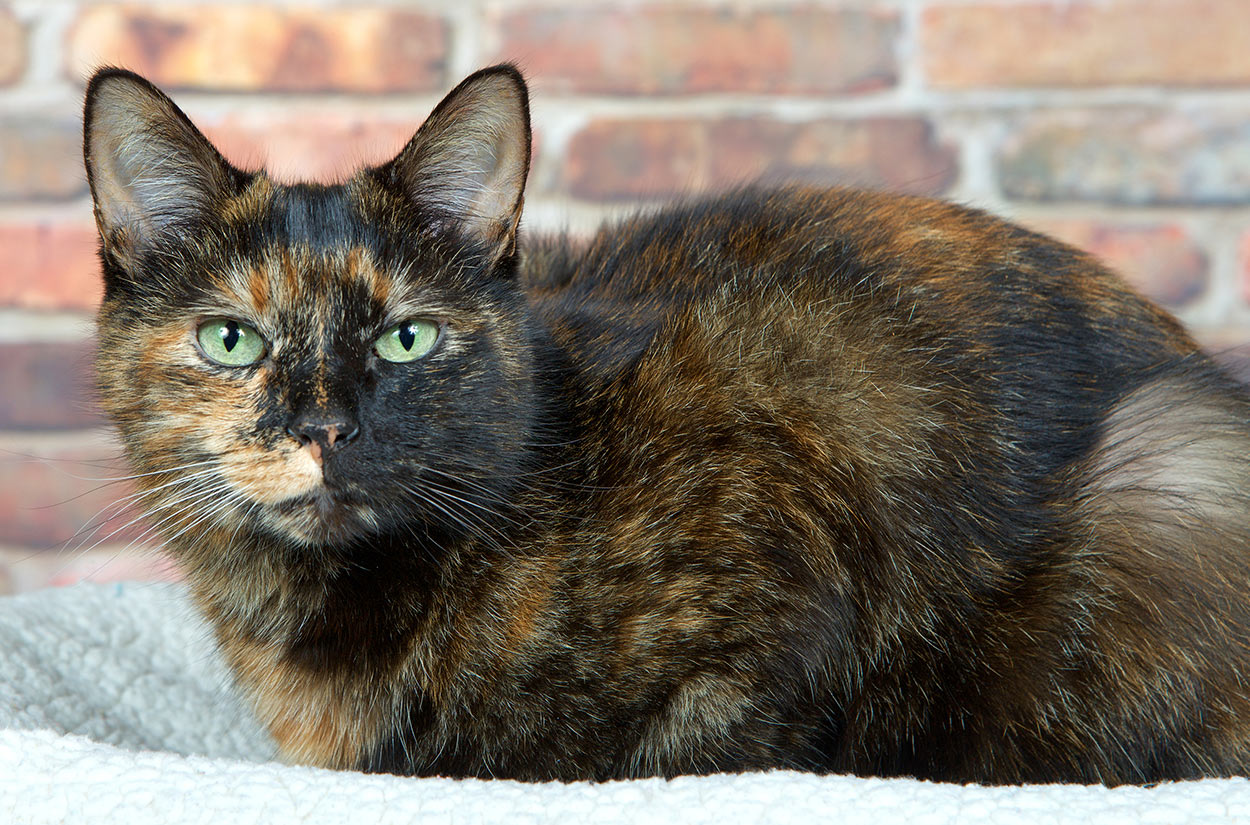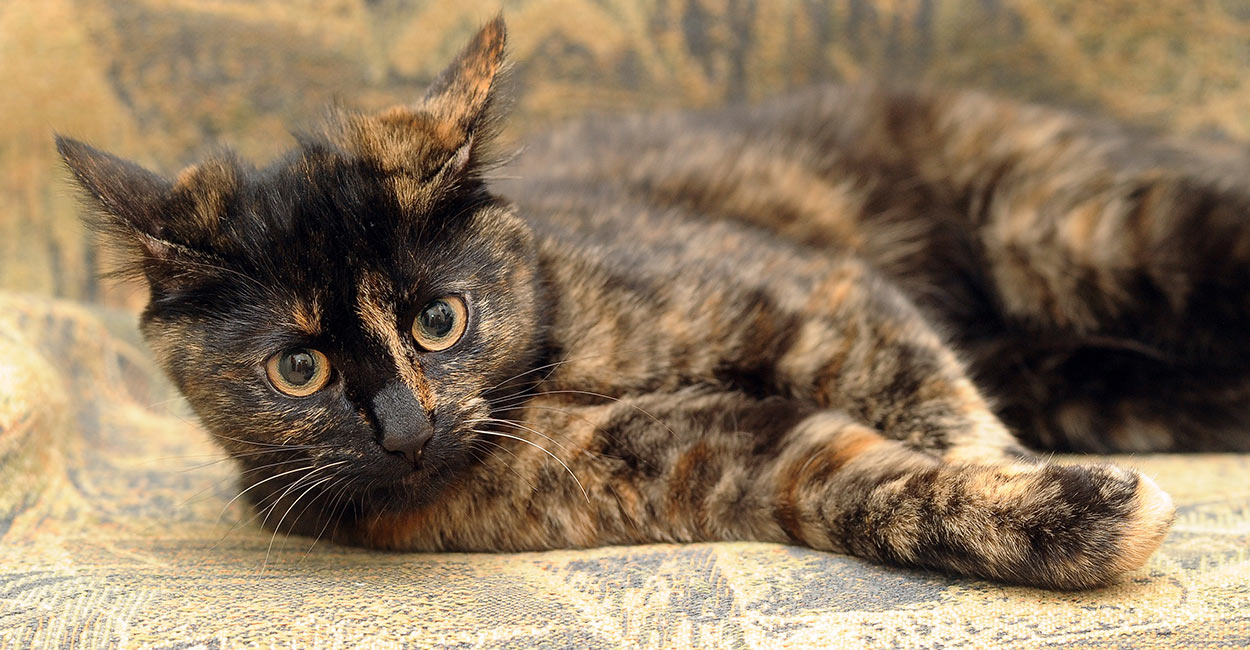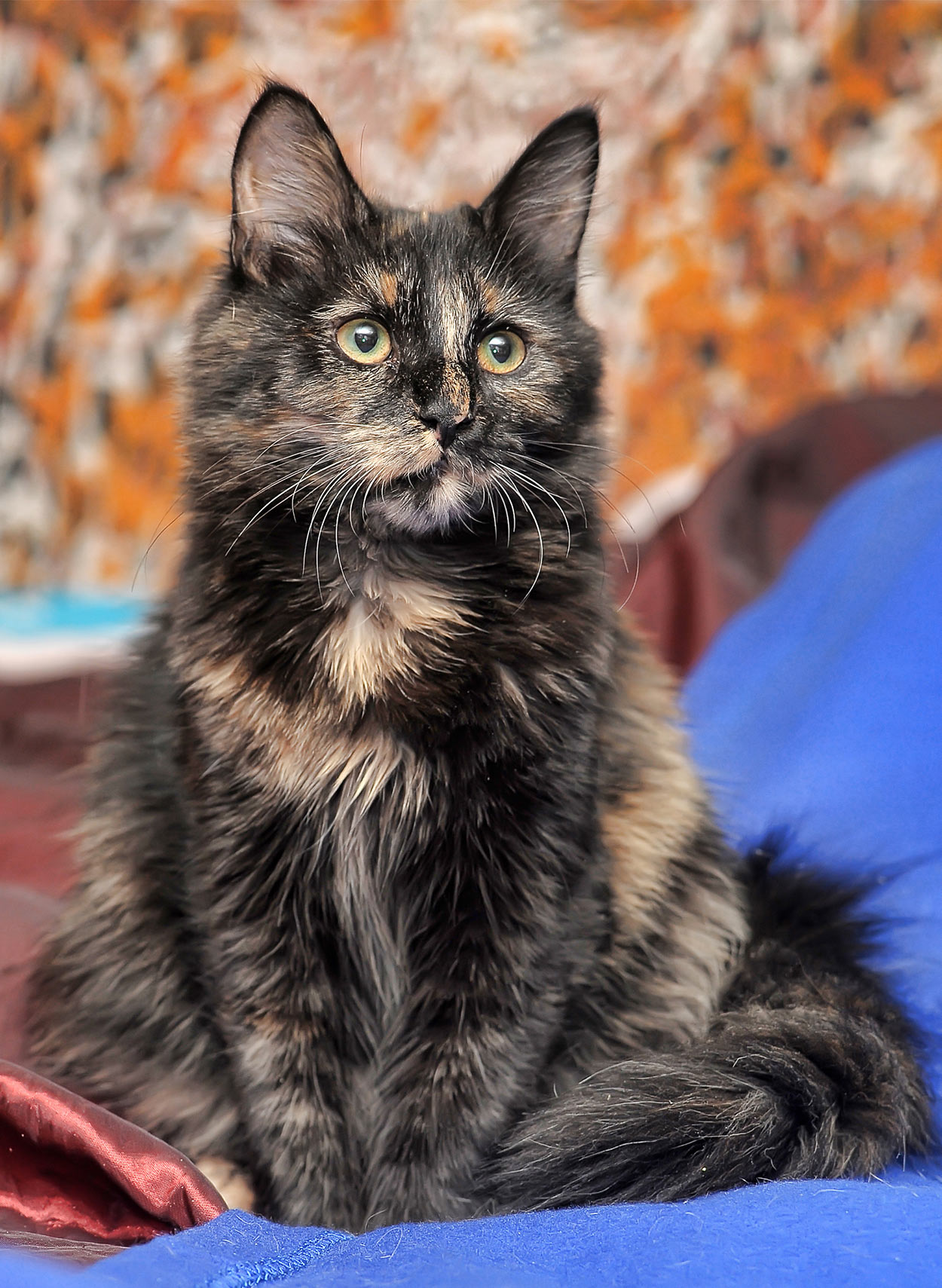Have you ever found yourself utterly captivated by a cat with a coat that looks like a beautiful painting, a true mosaic of warm colors? These special felines, often called "torties," carry quite a bit of charm and, you know, a few surprising facts about them. They are, in a way, living works of art, and we're going to explore what makes these creatures so very unique, from their striking appearance to their interesting personalities.
These cats, with their distinctive markings, have a way of catching your eye. They are, you see, celebrated for coats that truly stand out, making them some of the most striking felines around. It is, more or less, hard not to notice a tortoiseshell cat when one crosses your path, given their uniquely colored fur that draws attention.
We'll talk about their unique color combinations, how genetics play a part in their looks, and what makes their personalities so memorable. You might also be curious about how they differ from other patterned cats, or perhaps you're wondering about the rare male torties. We will, pretty much, cover all these points and more, offering a look at these wonderful companions.
- Breckie Hill Nude Leaks
- Who Was Chip Gaines First Wife
- Sofiarose
- Mikayla Campinos Mega
- Breckie Hill Onlyfans Leaks
Table of Contents
- What Makes a Tortoiseshell Cat So Special?
- Are Tortoiseshell Cats Mostly Female?
- What About the Personality of a Tortoiseshell Cat?
- How Do You Tell a Tortoiseshell Cat From Others?
What Makes a Tortoiseshell Cat So Special?
When you see a tortoiseshell cat, the first thing that really captures your attention is their coat. These cats are, essentially, known for a specific type of marking, not a particular species or breed of cat. It is a coat pattern that brings together various colors, making each cat look truly unique, a bit like a piece of abstract art. You know, their appearance is quite striking, with their unusually colored fur, which makes them stand out in any crowd of felines.
The name "tortoiseshell" itself comes from how their markings often look, resembling the shell of a tortoise. This comparison highlights the distinct patches of color that blend across their fur, giving them a very specific kind of beauty. It's not just a single color, but rather a blend, making them, in a way, living works of art that move and purr. These creatures, affectionately called "torties," are, basically, beautiful, and they hold surprising facts within their very being.
The distinct types of tortoiseshell cat patterns, each with its own captivating look, are something to explore. You might find some with a more defined patchwork, while others have colors that seem to flow into one another. This unique mosaic of colors, you see, truly sets them apart, making them a captivating blend of fiery spirit and loving companion. It's, quite frankly, hard to find two torties that look exactly alike, which adds to their special charm.
- Camilla Araujo Uncensored Videos
- Cate Blanchett Et Ses Fils
- Gerard Butler Actor Biography
- Simon Cowell Accidents
- Scarswonderland Lekas
The Distinctive Coat of the Tortoiseshell Cat
A tortoiseshell cat has a coat made up of patches of colors that are not white. Typically, these colors include shades of black, ginger, red, and sometimes cream. You might also see variations with chocolate or grey mixed in, or perhaps brown and gold patterns. These combinations create a coat that is, in a way, a vibrant display of different shades, making each cat a truly individual masterpiece. The blend of black, orange, and cream, for instance, has, basically, captured the hearts of cat lovers everywhere.
The core idea behind a tortoiseshell cat's appearance is that it features two colors other than white. This sets them apart from other multi-colored cats. For example, a common combination is black and orange, or perhaps brown and gold. These patterns are, you know, quite specific and help to define what a tortie looks like. Their very distinct markings are what give them their name, resembling the shell of a tortoise, as mentioned before.
While the main colors are usually black and some form of orange or red, there can, occasionally, be some white mixed in, but it's not the defining feature. The striking appearance of these cats, with their uniquely colored fur, is truly hard to miss. It's, as a matter of fact, one of the first things people notice and often fall in love with when they encounter a tortoiseshell cat. They are among the most distinctive and striking felines in the world, without a doubt.
Are Tortoiseshell Cats Mostly Female?
If you've ever met a tortie, chances are, you know, they were female. This is, in fact, one of the most widely known and fascinating facts about tortoiseshell cats. It's not just a common occurrence; almost all tortoiseshell cats are female. This particular characteristic is tied directly to their genetic makeup, which is something quite interesting to explore when you consider how their coat colors come about. So, yes, if you encounter a cat with these specific markings, it's very, very likely a girl.
The reason for this leans on genetics, specifically the chromosomes that determine sex and color. For a cat to display the trademark tortoiseshell coloring, which includes black, orange, and often yellow or gold patches, it needs two X chromosomes. Female cats, as you might know, naturally have two X chromosomes (XX). This genetic setup allows for the different color expressions to show up in patches across their fur. It's, in a way, a genetic lottery that typically favors female cats for this beautiful coat pattern.
Male cats, on the other hand, typically have one X and one Y chromosome (XY). Because they only have one X chromosome, they usually can't display the full range of colors needed for a tortoiseshell pattern. This is why male torties are so rare. It's a bit like finding a four-leaf clover; they exist, but you don't see them every day. The fact that about 1 in 3,000 tortoiseshell cats are male makes them, quite honestly, uncommon and very special when they do appear. This genetic story is a core part of what makes the tortoiseshell cat so captivating.
The Genetic Story of the Tortoiseshell Cat
The genetic story behind the tortoiseshell cat's coat is, to be honest, pretty neat. The genes responsible for orange and black fur colors are located on the X chromosome. Since female cats have two X chromosomes, they have two "slots" for these color genes. This allows for a kind of mosaic effect to happen during development, where different cells in the cat's body "turn off" one X chromosome or the other, leading to patches of different colors. It's, basically, how you get those distinct black, orange, and sometimes cream or yellow areas on their fur.
For a male cat to be a tortoiseshell, something unusual has to happen genetically. Instead of the typical XY chromosomes, a male tortoiseshell cat usually has an extra X chromosome, making their genetic makeup XXY. This extra X chromosome gives them the two "slots" needed to express both orange and black colors in patches. This condition, known as Klinefelter syndrome in humans, is what allows for the rare occurrence of a male tortie. It is, therefore, a truly unique genetic event when it occurs.
This genetic difference also explains why male tortoiseshell cats can sometimes have certain health issues. While the source text mentions "health issues of male torties," it doesn't specify them. However, it's generally understood that the XXY genetic makeup can lead to particular health considerations, making these already rare cats even more special and in need of specific care. The genetic secrets behind their unique colors are, you know, quite fascinating, adding another layer to the appeal of the tortoiseshell cat.
What About the Personality of a Tortoiseshell Cat?
Tortoiseshell cats are, apparently, best known as "the divas of the cat world." This affectionate nickname hints at their often strong and very distinct personality traits. If you've spent time around a tortie, you might agree that they tend to have a fiery spirit and a vocal nature. They are, in a way, not shy about expressing themselves, whether it's through a purr, a meow, or a playful swat. This makes them, you know, quite engaging companions for those who appreciate a cat with a lot of character.
Many people describe tortoiseshell cats as having a captivating personality, a blend of spirited independence and loving companionship. They are often said to be quite vocal, making their presence known through various sounds and expressions. This isn't to say they're always loud, but they do tend to communicate their feelings and desires quite clearly. It's, as a matter of fact, part of their charm, adding to their unique appeal and making them memorable pets.
Their distinct personality traits are often linked to their unique colors, though this is more of a popular belief than a scientific fact. Still, the idea of a "tortitude" – a portmanteau of "tortie" and "attitude" – is widely used among cat lovers to describe their spirited nature. They are, essentially, thought of as cats with a lot of spunk, who are also capable of being incredibly affectionate and loyal to their human companions. It's a combination that makes them, you know, quite special in the feline family.
The Lively Spirit of the Tortoiseshell Cat
The lively spirit of the tortoiseshell cat is something that truly stands out. They are often described as having a very unique and vocal personality. This means they might "talk" to you more than other cats, using a range of meows, chirps, and trills to get their message across. It's, basically, their way of communicating, and it adds a lot of life to a home. You'll find that they are not just pretty faces; they have a lot to say, in their own feline way.
Beyond their vocalizations, torties are often seen as intelligent and playful. They enjoy interaction and can be quite curious about their surroundings. This makes them, in a way, very engaging pets who keep things interesting. They might follow you around the house, observe your activities, or even try to "help" with tasks. Their inquisitive nature means there's rarely a dull moment when a tortoiseshell cat is around, as a matter of fact.
Despite their sometimes feisty reputation, tortoiseshell cats are also known for being loving and devoted companions. They can form strong bonds with their human family members and enjoy cuddles and affection on their own terms. It's a balance of independence and warmth that makes them, you know, truly special. Their unique mosaic of colors and distinct personality make them a captivating blend of fiery spirit and loving companion, as mentioned before.
How Do You Tell a Tortoiseshell Cat From Others?
It can be a bit tricky to tell a tortoiseshell cat from other multi-colored felines, especially calico and torbie cats, since they all have patches of color. The main thing to remember is what defines a true tortoiseshell cat. A tortoiseshell cat, specifically, is one that has two colors other than white. The colors are typically shades of ginger, red, and black, but occasionally there is some white. This specific rule about the absence of large white patches is, you know, the key differentiator. It's, basically, how you spot the real deal.
The most common mix-up is between a tortoiseshell and a calico cat. The big difference is the amount of white. A calico cat will have distinct patches of white, along with the black and orange (or similar colors). Think of a calico as a tortie with significant white areas. If you see a cat with large, clear patches of black, orange, and white, you're looking at a calico. A tortoiseshell, by contrast, will have those two main colors, with white either absent or only present in very small flecks, not large blocks. This distinction is, in a way, quite important for telling them apart.
Then there's the "torbie" cat. A torbie is, essentially, a tortoiseshell cat that also has tabby markings within its colored patches. So, you'll see the classic tortie colors – the black, orange, and so on – but if you look closely at those colored areas, you'll notice stripes or swirls, which are the tabby patterns. It's like a tortoiseshell cat wearing a striped shirt under its colorful coat. This makes them, you know, a bit of a hybrid in terms of pattern, combining the best of both worlds. Knowing these differences helps you appreciate the unique beauty of each type of cat.
Spotting the Difference in a Tortoiseshell Cat
Spotting the difference in a tortoiseshell cat compared to a calico or a torbie really comes down to the details of their coat. For a pure tortoiseshell cat, the colors – usually black and orange or red, sometimes brown or gold – are blended or patched together without large areas of white. The colors, you know, seem to flow into each other, creating a kind of mottled or speckled look, or distinct patches that are close together. It's a beautiful, rich mix, without the stark contrast of white sections.
When you see a calico, on the other hand, the white is very much a part of their identity. The patches of black, orange, and white are usually quite clear and separate, like distinct blocks of color. It's, basically, a three-color cat with white as a prominent feature. This makes them, in a way, quite easy to distinguish once you know what to look for. If the cat has significant areas of white fur along with the other two colors, it's a calico, not a standard tortoiseshell.
And for the torbie, remember those tabby stripes. A torbie is, actually, a tortoiseshell cat with tabby markings. So, the colored patches of black and orange will have the characteristic "M" on the forehead, or stripes on the legs and tail, or swirled patterns on the body, that you see on tabby cats. It's a subtle but important detail that makes them, you know, a different kind of multi-colored feline. So, if you see a cat with tortie colors and stripes, you've found a torbie, which is, in some respects, a very special variation of the tortoiseshell cat.
Tortoiseshell cats, fondly referred to as torties, are a captivating blend of fiery spirit and loving companion. Their unique mosaic of colors and distinct personality truly make them stand out. They are, you know, among the most distinctive and striking felines around, with their vibrant coats typically featuring a blend of black, orange, and cream, which has, basically, captured the hearts of cat lovers everywhere. Their history, personality links, and why adopting one might just color your world with joy are all part of their appeal. These beautiful creatures, affectionally called “torties,” are, as a matter of fact, best known as “the divas of the cat world,” and this particular kind of cat hides surprising facts within its very nature. Almost all tortoiseshell cats are female, and about 1 in 3,000 tortoiseshell cats are male, making them quite uncommon. This is because two x chromosomes are needed to produce the trademark tortoiseshell coloring of black, orange, and yellow/gold, while male cats only have one x and one y. Tortoiseshell isn’t a particular species of cat, but rather refers to a
Related Resources:



Detail Author:
- Name : Dr. Kenneth Cruickshank Jr.
- Username : eddie91
- Email : lschoen@bode.com
- Birthdate : 1975-08-15
- Address : 1961 Powlowski Neck Schoenstad, LA 62736
- Phone : +1 (802) 822-2837
- Company : Braun-Raynor
- Job : Painter
- Bio : Molestias quae officia laboriosam ea voluptas quo nemo. Exercitationem illum sit deleniti error. Beatae consequatur voluptatem sit soluta et iste.
Socials
instagram:
- url : https://instagram.com/marleneprohaska
- username : marleneprohaska
- bio : Autem delectus debitis nostrum ducimus natus. Voluptas vitae nisi culpa.
- followers : 2961
- following : 2314
twitter:
- url : https://twitter.com/marleneprohaska
- username : marleneprohaska
- bio : Maxime quia et illo est. Amet ducimus quis in qui consectetur. Accusantium est atque consectetur in molestias consequuntur iusto facilis.
- followers : 2595
- following : 2435
tiktok:
- url : https://tiktok.com/@marlene_prohaska
- username : marlene_prohaska
- bio : Distinctio numquam exercitationem nulla sunt odio quam.
- followers : 6470
- following : 984
linkedin:
- url : https://linkedin.com/in/mprohaska
- username : mprohaska
- bio : Qui harum quaerat nemo qui fugiat.
- followers : 5014
- following : 1951